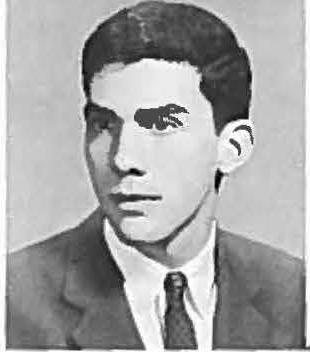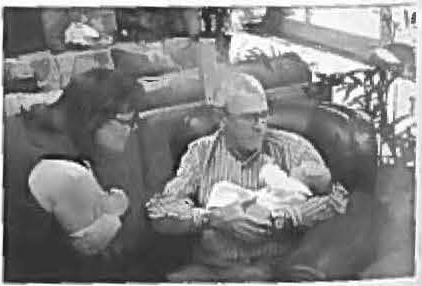50th Reunion
Barbara and I are thrilled with our new granddaughter. She is the latest of many blessings we have shared in the 32 years of our marriage. Let's see...after Amherst's liberating atmosphere, there was the mind numbing tedium of Medical School at Columbia University. Not until the third year and the experience of patient care did I actually begin to think I had made the right choice. Although I wanted to leave the city, somehow, Medical School, Internship, Residency and Cardiology fellowship at Columbia followed in rapid succession.
This nine year stint on the Upper West Side of Manhattan turned out to be quite fortuitous. It was at that time that I became involved in what was to be my life's work: Cardiac Electrophysiology. 1967 was about the time that the transition was being made from cellular electrophysiology, to tissue studies and then to actual human clinical studies. I became involved and along with my mentor, Thom Bigger, commenced the invasive study of human cardiac arrhythmias. As luck would have it, a straight forward study of conduction across the AV node resulted in the replication of a very common clinical arrhythmia. Thom and I realized that this finding might have far reaching implications and began a series of studies which determined what the mechanism of this arrhythmia was. Through an accident, human cardiac clinical electrophysiology started.
My work at Columbia resulted in my military service requirements being fulfilled at the USPHS Hospital on Staten Island. A clinical research laboratory attracted a group of young physicians and investigators whose efforts were entirely dedicated to pursuing studies in this fledgling field. Scores, if not hundreds, of published articles established a new field in cardiology. Like Forrest Gump, I somehow was in the right place at the right time. After military service it was on to the University of Pennsylvania where I established the first dedicated Cardiac Electrophysiology laboratory and continued research on arrhythmias. I was honored with the Bellet Professorship of Cardiology while there.
As my first marriage was dissolving, my family and I moved to Southern California into the private practice of Cardiology and a Clinical Professorship at USC. Strangely enough clinical research was easier in private practice than in the University setting. Further studies of cardiac arrhythmias and drug interaction ensued. At this time pacemaker therapy and the advent of the implantable defibrillator attracted my attention. I consulted for several large device companies device companies and patented several devices for cardiac stimulation and recording. As my career was blossoming, my marriage ended disastrously.
I met, fell in love with, and eventually married a beautiful young coronary care nurse, Barbara. Things began to fall into place and we became a family: my two children (Anna and Peter) and her daughter, Lori. At about this time I became involved with horses. I had ridden as a kid, but began serious trail riding when 1 was invited to a campout and ride on Catalina Island. The change from the incredibly technical aspects of electrophysiology to the pure beauty and joy of seeing the world at three miles an hour began to change my priorities. Barb indulged me by allowing us to purchase ranch property in Murrieta, CA. We retired there seven years ago and now have five horses, a great dog, chickens and a 1 acre bass pond on the property.
We have five grandchildren (Delphine, Andy, Jacob, Hudson and Katherine). Delphine, who has lived with us since she was seven, is now applying to colleges…Amherst among them. The other kids are busy with school and athletics. Now so you don't think that all we do is ride and fish, I should mention that in 1988 my medical partner, Dr. Paul Kurth, and 1 started a medical device company. Pressure Products grew from a single patented device to a series of inventions which we own or license. It is now a large international enterprise which we manage from Murrieta, Jackson Hole, Beverly Hills and Swarthmore. Again like Forrest Gump we were just in the right place at the right time. It has been a fascinating transition from medical practice and research to the business world.
Barb and I were last at Amherst two summers ago when Delphine attended a 6 week SIG program there. The memories were overwhelming because so little had changed. I look back at my time there and find it impossible that 50 years have gone by since I wandered from Seelye House to the main campus, enveloped in pipe smoke and huddling in a bulky sweater. So much has happened since then and yet so little has changed.

